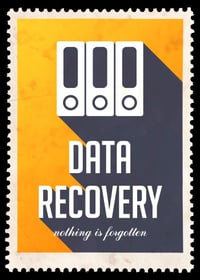What to do if malware is detected
Malicious software (more commonly known as malware) can be found on almost any system, most often being downloaded and installed on computers. It can...
1 min read
Lance Stone : Apr 14, 2014 3:42:23 PM
 Manufacturing companies create and store extensive amounts of business-critical data, including sales documents, drawings, project documentation, accounting information, employee payrolls, and purchasing orders. It’s critical to ensure this data is backed up and recoverable in the event of a significant data loss.
Manufacturing companies create and store extensive amounts of business-critical data, including sales documents, drawings, project documentation, accounting information, employee payrolls, and purchasing orders. It’s critical to ensure this data is backed up and recoverable in the event of a significant data loss.
There’s a huge variety of potential ways to lose data, such as database corruption, hardware failures, employee mistakes, and even natural disasters. Do you have a data backup and disaster recovery plan in place? For manufacturing companies, data is the heart of the business. You must implement a data backup and disaster recovery plan to ensure data is protected at all times.
Data Backup
There are many types of data backup solutions available, however, the backup solution that’s best for your organization will depend on multiple factors:
In the manufacturing industry, it’s critical to find a reliable backup solution. In fact, a backup solution is meaningless without a reliable method of recovering data. Once you’ve chosen a reliable backup solution that meets your needs, make sure you’re performing routine tests to ensure data is restorable.
Disaster Recovery
What would happen if all of your equipment was inoperable? Most manufacturing companies would experience a significant loss in revenue and decreased customer confidence. In a manufacturing environment, a disaster recovery plan must include:
If a disaster occurs, a business continuity plan can help you recover and continue business operations in a timely manner.
To learn more about data backup and disaster recovery planning, give us a call at {phone} or send us an email at {email}. {company} can help you protect your business-critical data in the event of a disaster.

Malicious software (more commonly known as malware) can be found on almost any system, most often being downloaded and installed on computers. It can...

Communication is one of the most important key aspects of any properly functioning company or organization. While communicating via telephones and...

Don’t Be Surprised When YOUR Network is Hacked – Leaving All of Your Sensitive Data in the Hands of Cybercriminals! Most large companies already...

On Time Tech is an IT Support and Computer Services company serving California. We provide services to the areas in and around We know businesses like yours need technology support in order to run highly-effective organizations. Leverage pro-growth technology services for your company now.
San Francisco:
182 Howard St.
Suite 108
San Francisco, CA 94105
Los Angeles:
8350 Rex Road
Pico Rivera, CA 90660
Business Hours:
M-F: 8AM-9PM
© 2024 On Time Tech